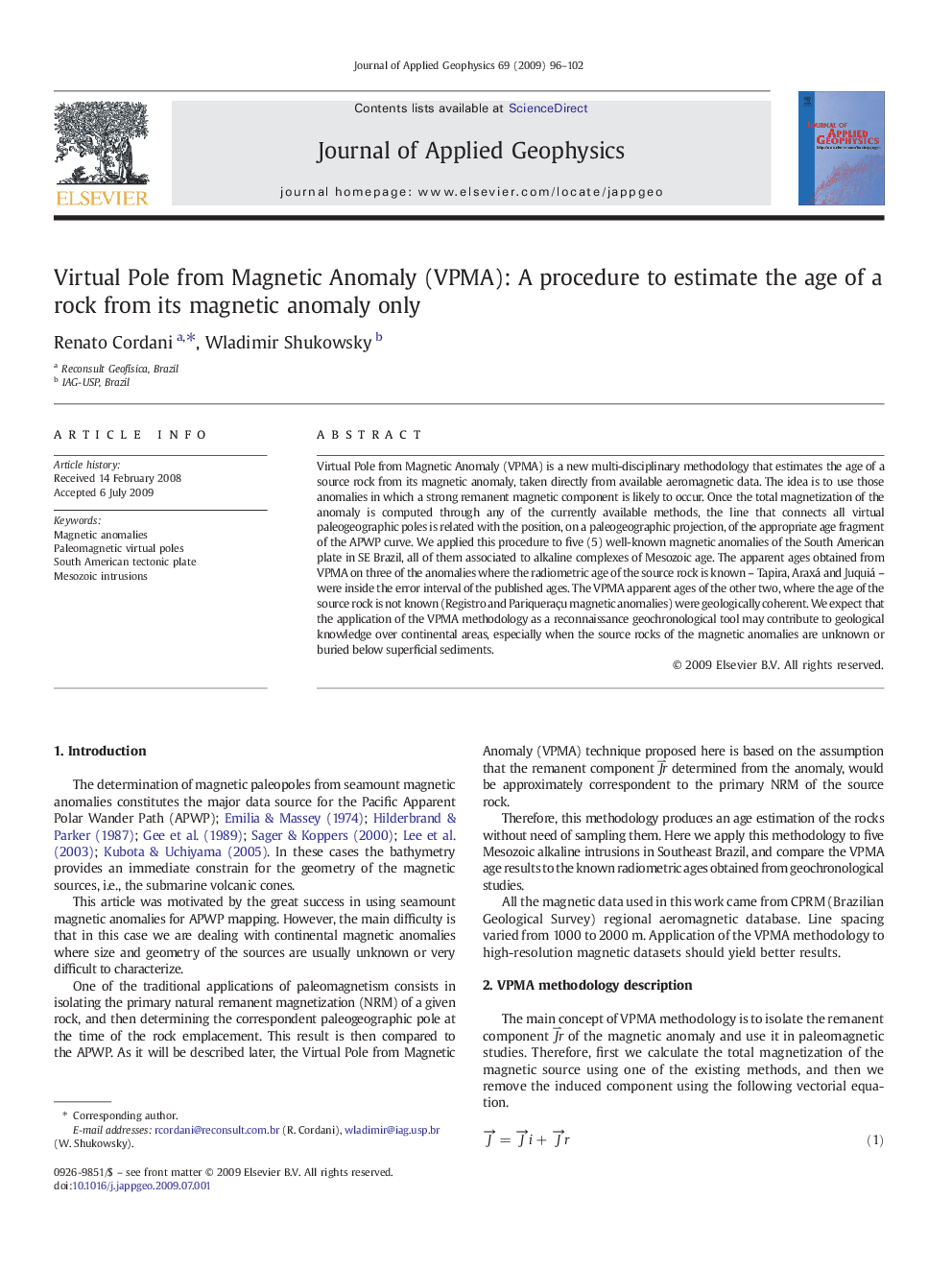| Article ID | Journal | Published Year | Pages | File Type |
|---|---|---|---|---|
| 4741010 | Journal of Applied Geophysics | 2009 | 7 Pages |
Abstract
Virtual Pole from Magnetic Anomaly (VPMA) is a new multi-disciplinary methodology that estimates the age of a source rock from its magnetic anomaly, taken directly from available aeromagnetic data. The idea is to use those anomalies in which a strong remanent magnetic component is likely to occur. Once the total magnetization of the anomaly is computed through any of the currently available methods, the line that connects all virtual paleogeographic poles is related with the position, on a paleogeographic projection, of the appropriate age fragment of the APWP curve. We applied this procedure to five (5) well-known magnetic anomalies of the South American plate in SE Brazil, all of them associated to alkaline complexes of Mesozoic age. The apparent ages obtained from VPMA on three of the anomalies where the radiometric age of the source rock is known - Tapira, Araxá and Juquiá - were inside the error interval of the published ages. The VPMA apparent ages of the other two, where the age of the source rock is not known (Registro and Pariqueraçu magnetic anomalies) were geologically coherent. We expect that the application of the VPMA methodology as a reconnaissance geochronological tool may contribute to geological knowledge over continental areas, especially when the source rocks of the magnetic anomalies are unknown or buried below superficial sediments.
Keywords
Related Topics
Physical Sciences and Engineering
Earth and Planetary Sciences
Geophysics
Authors
Renato Cordani, Wladimir Shukowsky,
